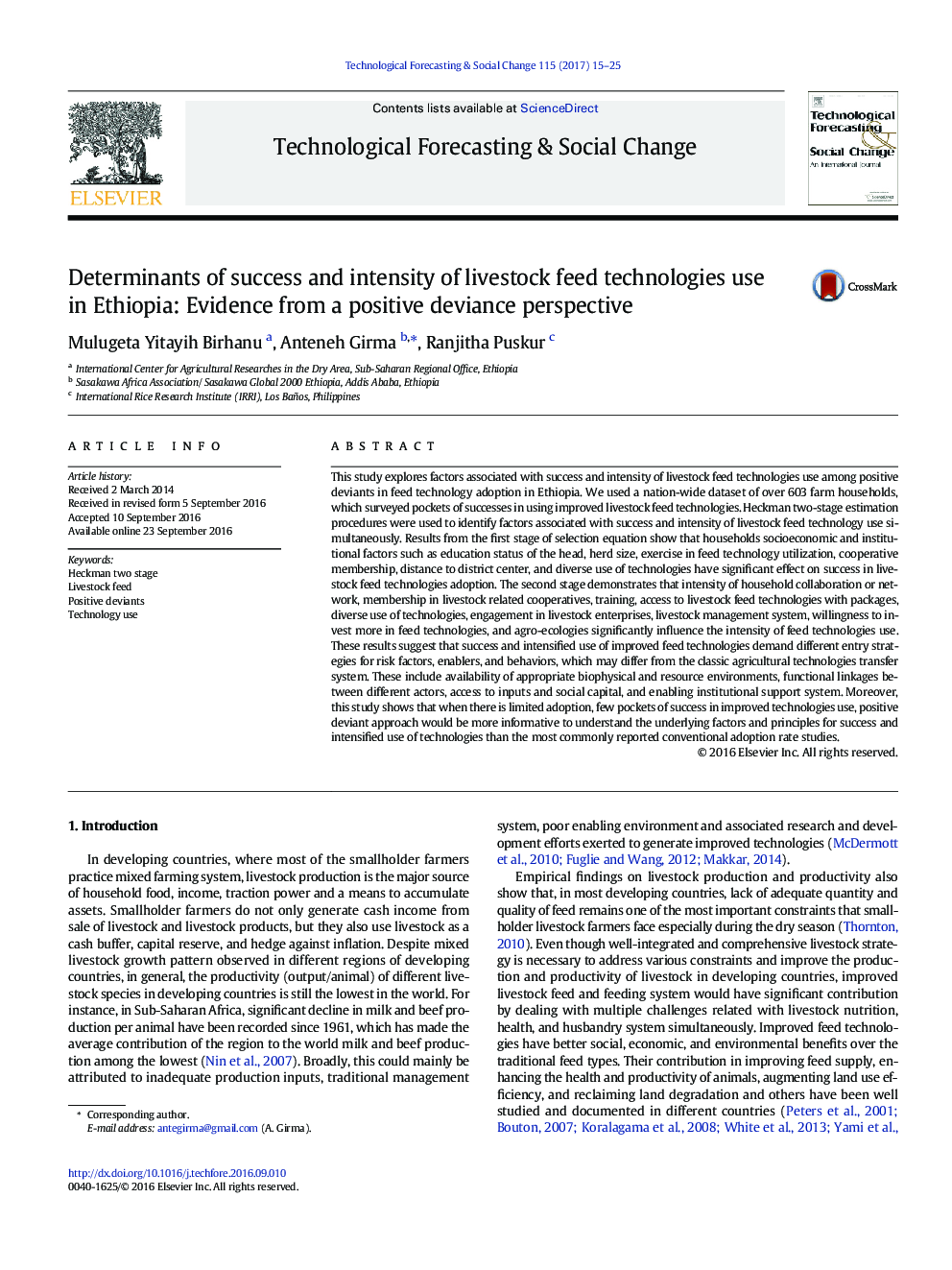| Article ID | Journal | Published Year | Pages | File Type |
|---|---|---|---|---|
| 5037111 | Technological Forecasting and Social Change | 2017 | 11 Pages |
â¢Positive deviant approach is employed to evaluate livestock feed technologies use.â¢Nature of technology influences success of improved feed technology use.â¢Household enabling factors and social capital enhance intensified use of technology.â¢Multi-stakeholder collaboration fosters intensified use of improved feed technology.â¢Livestock feed technology promotion needs specific entry strategy and support system.
This study explores factors associated with success and intensity of livestock feed technologies use among positive deviants in feed technology adoption in Ethiopia. We used a nation-wide dataset of over 603 farm households, which surveyed pockets of successes in using improved livestock feed technologies. Heckman two-stage estimation procedures were used to identify factors associated with success and intensity of livestock feed technology use simultaneously. Results from the first stage of selection equation show that households socioeconomic and institutional factors such as education status of the head, herd size, exercise in feed technology utilization, cooperative membership, distance to district center, and diverse use of technologies have significant effect on success in livestock feed technologies adoption. The second stage demonstrates that intensity of household collaboration or network, membership in livestock related cooperatives, training, access to livestock feed technologies with packages, diverse use of technologies, engagement in livestock enterprises, livestock management system, willingness to invest more in feed technologies, and agro-ecologies significantly influence the intensity of feed technologies use. These results suggest that success and intensified use of improved feed technologies demand different entry strategies for risk factors, enablers, and behaviors, which may differ from the classic agricultural technologies transfer system. These include availability of appropriate biophysical and resource environments, functional linkages between different actors, access to inputs and social capital, and enabling institutional support system. Moreover, this study shows that when there is limited adoption, few pockets of success in improved technologies use, positive deviant approach would be more informative to understand the underlying factors and principles for success and intensified use of technologies than the most commonly reported conventional adoption rate studies.
